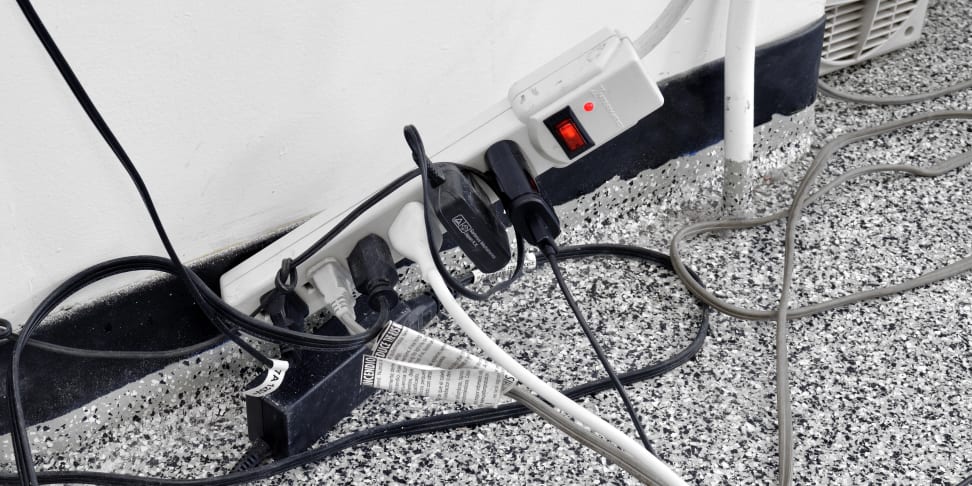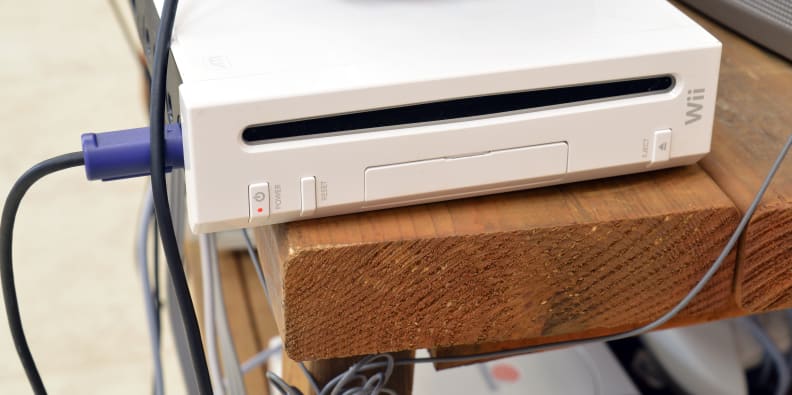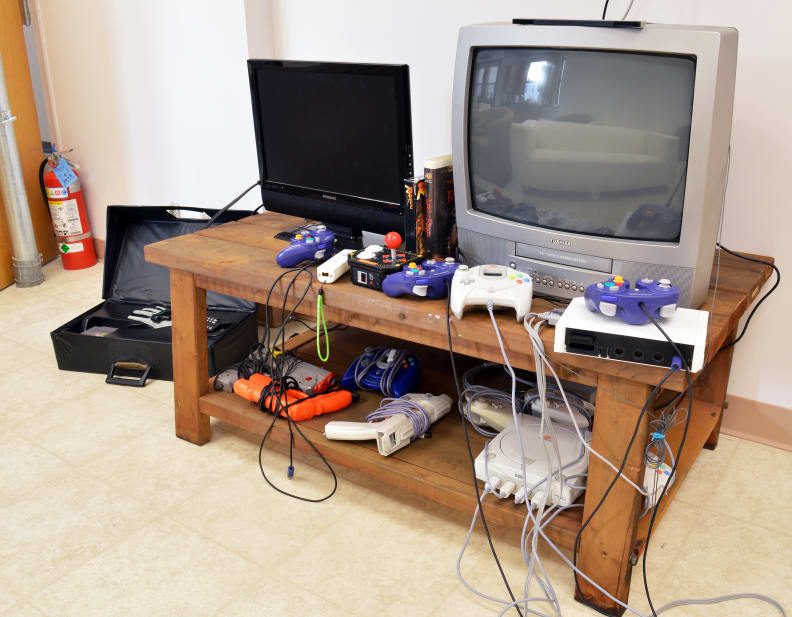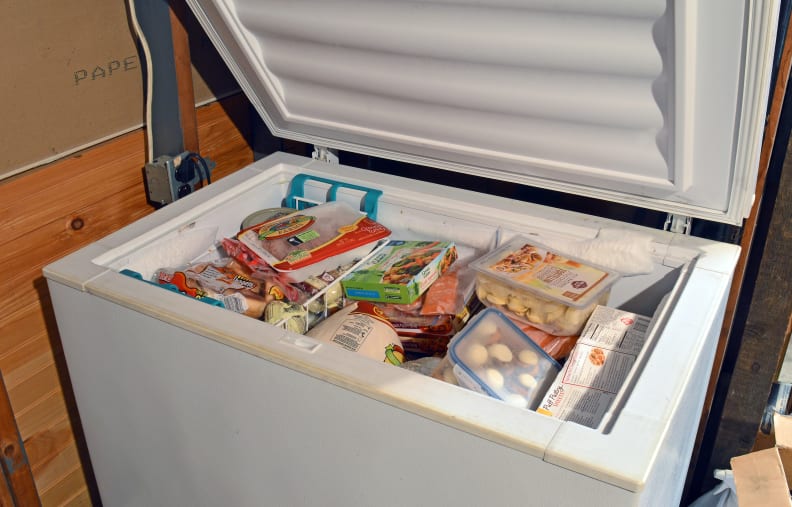Vampire Power: The Invisible Tax on Your Energy Bill
Your gadgets and appliances may be bleeding your wallet dry...
 Credit:
Reviewed.com / Matthew Zahnzinger
Credit:
Reviewed.com / Matthew Zahnzinger
Products are chosen independently by our editors. Purchases made through our links may earn us a commission.
You may not realize it, but most of our electronic devices—everything from TVs to fridges—are a lot more efficient than they used to be. Thanks to a cultural and economic push for greater sustainability, homes now draw much less power than they used to.
At the same time, however, many of our favorite gadgets and white goods have come to exist in a state of perpetual connectivity. Sleep modes, stand-by modes, WiFi connectivity, even the little clock on your microwave—they all consume power at a more or less constant pace.
Taken on their own, most of these devices aren't exactly energy hogs. But as more and more of them adopt "power saver" settings and sleep-mode displays, the phenomenon known as "vampire power"—also known as ghosting or standby power—becomes a pretty serious issue. In short, it begins to push back against the huge advances in efficiency achieved in recent decades.

Even when it's off, it's on... Notice the Wii's small red indicator light, letting you know it's plugged in.
The Big Draw
On a case-by-case basis, vampire power may not seem like a big deal, but in the aggregate it amounts to a major economic force. A recent study by the National Resources Defense Council found standby power costs Americans a total of $19 billion dollars each year.
Broken down, that comes out to about $164 a year for the average household, though some folks living in areas with higher energy costs could be spending up to $440 annually. That may not seem like much compared to a car payment or what you spend in gas from month to month, but it's still a considerable amount of money down the drain (or, down the plug).
{{amazon name="Take Charge Smart Power Strip Energy Saving Surge Protector with Autoswitching Technology 8 - Outet - UTC8MS", asin="B005DTBCD2", align="right"}} To give you a sense of scale, the NRDC paints a picture using something many of us can relate to: cups of coffee. "The average always-on load uses the same amount of electricity as brewing 234 cups of coffee every single day for a year—more than 85,000 cups of coffee."
...Bottom's up?
Back in the day—only about a decade ago—vampire power wasn't a big deal. Sure, your microwave might have had a digital clock on it, or maybe you forgot to unplug your old flip phone once the battery was charged. By and large, though, most items were only using power when they were actively functioning. So what happened? In short, the internet happened—or, more precisely, the desire to always be connected.

No one can use all these systems at once. If you're not actively using an electronic device—and don't plan to soon—just unplug it.
The Culprits
Today, it seems like everything has a digital screen. Basic appliances that use to have analog controls—like washers, dryers, and fridges—now feature electronic displays and wireless connectivity options. And the appliances of the future are only going to be more connected.
But it's not just appliances; cable boxes have also gotten pretty power-hungry. According to the Los Angeles Times, cable boxes are now the second highest energy consumers in the home after air conditioners.
This is mainly due to the constantly spinning hard drives, updates, and downloads associated with modern digital TVs—things you didn't have to worry about with old-fashioned rabbit ears or CRTVs.
Another major culprit is the modern video game console. Ever pause a game, turn off the TV (or worse, let it fall into "sleep" mode), then walk away to do a quick chore, leaving the system on so you can pick up where you left off? Well that draws a lot of unnecessary power. (It's okay—we've all done it.)
The Nintendo Wii was probably the most obvious offender. Former Wii owners, how many times did you wake up to a faintly pulsing green light before you turned the "always connected" option off? Even if you just left it plugged in, a small red LED light would let you know it's ready to launch... and drawing power. Xbox and Playstation are no different; whether your loyalty is with Nintendo, Microsoft, or Sony, all major systems are susceptible to vampire power.

It may be expensive upfront to replace outdated appliances, but the energy efficiency improvements may be worth it. Plus, if you're not living with at least two other people, this much food may be overkill.
The Solution
Maybe you're not concerned about these energy vampires, but if you're looking to save some money on your next electricity bill—or if you're just trying to live more sustainably—the NRDC has a nifty little guide for you. If you want to save energy bit by bit, try a few of their suggestions.
1) Get rid of things you don't need...
For instance, if you have both an oven and a microwave in your kitchen—and both have clocks—do you really need a separate clock radio? (And for that matter, between your phone and your laptop, do you really even need a radio in 2015?)
On a larger scale, think about whether you really need that second fridge in the garage, or that standalone freezer in the basement. Maybe having less room to store food means buying less, thereby cutting down on food waste and saving you more money, too.
2) ...and unplug things you don't use.
Have a guest bedroom with a TV? Unplug it until you have guests. Does your coffee pot have a clock on it? Unplug it before you leave for work. Have two video game consoles but primarily play just one? Unplug the other system until you get a hankering for something different. If your outlets are accessible, this shouldn't be an issue.
3) Suck it up and wait!
Sometimes it's a good idea to just shut down your laptop or video game console instead of letting it hibernate. Sure, it could mean you'll have to wait for updates to install, but if you're not going to use the device for a while (like when you're sleeping), the long-term savings on your electricity bill will thank you.
4) Out with the old, in with the new
If you've got a 20-year-old fridge sitting in your kitchen, or a 30-year-old TV in the living room, consider swapping it out with a new, more efficient model. Some communities even have appliance recycling programs that will pay you to haul away aging appliances as an incentive to upgrade and recycle.
In an age of modern efficiency, our devices should be working for us, not sucking up our resources. Take some time to walk through your home; think long and hard about how you're using the various devices that are plugged into the wall; and help put a stake into the heart of vampire energy.
Related Video
{{brightcove '4017455374001'}}
